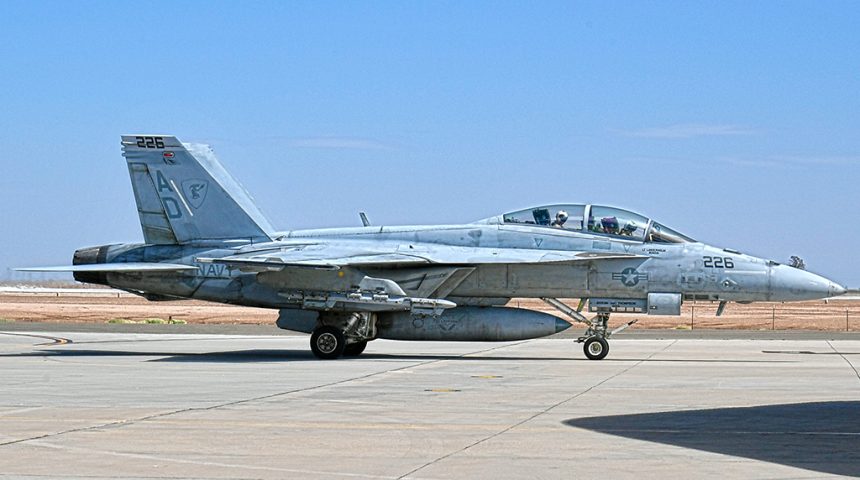An F/A-18F Super Hornet suffered a bird strike during a mission out of NAF El Centro, California. The mishap was labeled Class A, meaning damage between 2.5M USD and total loss of the aircraft.
An F/A-18F Super Hornet assigned to the “Gladiators” of Strike Fighter Squadron (VFA) 106, suffered a severe mishap on Mar. 22, 2021, as the aircraft experienced a bird strike during a training mission out of Naval Air Facility (NAF) El Centro, California.
According to the U.S. Navy, neither the pilot nor the RIO aboard the two-seater “Rhino” (as the aircraft is nicknamed within the Navy community) were injured following the mishap, said Lt. Cmdr. Robert Myers, the Naval Air Force Atlantic spokesperson, according to a story by Military.com‘s reporter Oriana Pawlyk.
The aircraft managed to land back at El Centro but the post-flight inspection highlighted serious damages to both the air intake and engine. As a consequence, the mishap has been labeled a Class A damage, the most severe one, that is to say a damage of at least 2.5M USD or the total loss of an aircraft. This is a preliminary classification as the investigation will determine the root cause of the incident and assess the exact level of damage the airframe and engines sustained.
Strike Fighter Squadron 106 (VFA-106) is the Navy’s East Coast Fleet Replacement Squadron, which trains naval aviators to fly the F/A-18E/C Super Hornet. The Gladiators are also one of the squadrons that made up the US Navy’s Tac Demo Teams, together with the Flying Eagles of VFA-122 out of NAS Leemore, California.
The bird strike occurred as the F/A-18F of the VFA-106 “Gladiators”, deployed to the West Coast from their homebase at NAS Oceana, Virginia, was flying a low level mission: NAF El Centro supports combat training and readiness, including air operations support to operational fleet and training squadrons as well as squadrons from other services, in the winter period.
Bird strikes pose a significant threat to military (and commercial) traffic all around the world, a threat that can cause serious incidents, especially when the collision occurs with a large bird, a flock, and the impact damages the canopy, the control surfaces or the engines, and the aircraft is taking off or landing. While bird strikes are rare in commercial aviation, because of them, the Civilian Aviation suffers an average 1.2 Billion USD damages each year. Military aviation is even more exposed to the risk, since aircraft fly often at lower altitudes (where more birds can be found) and higher speeds (which make reaction time shorter and avoidance much difficult).









